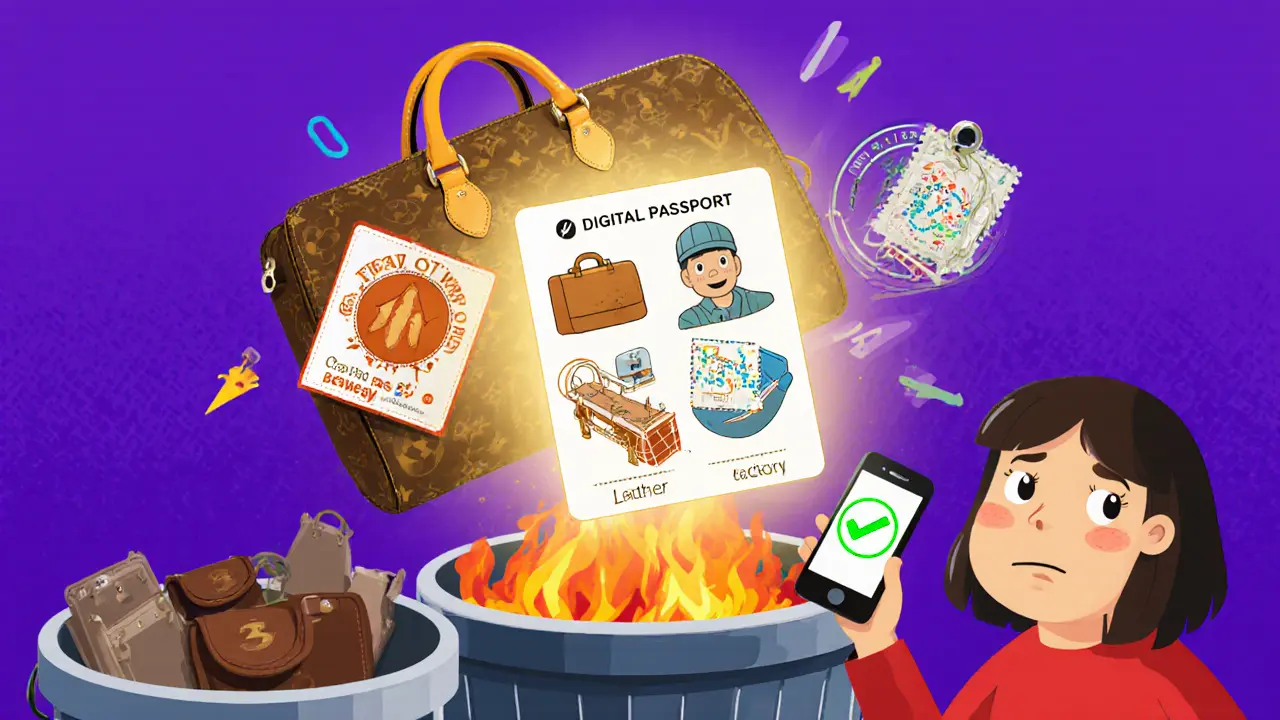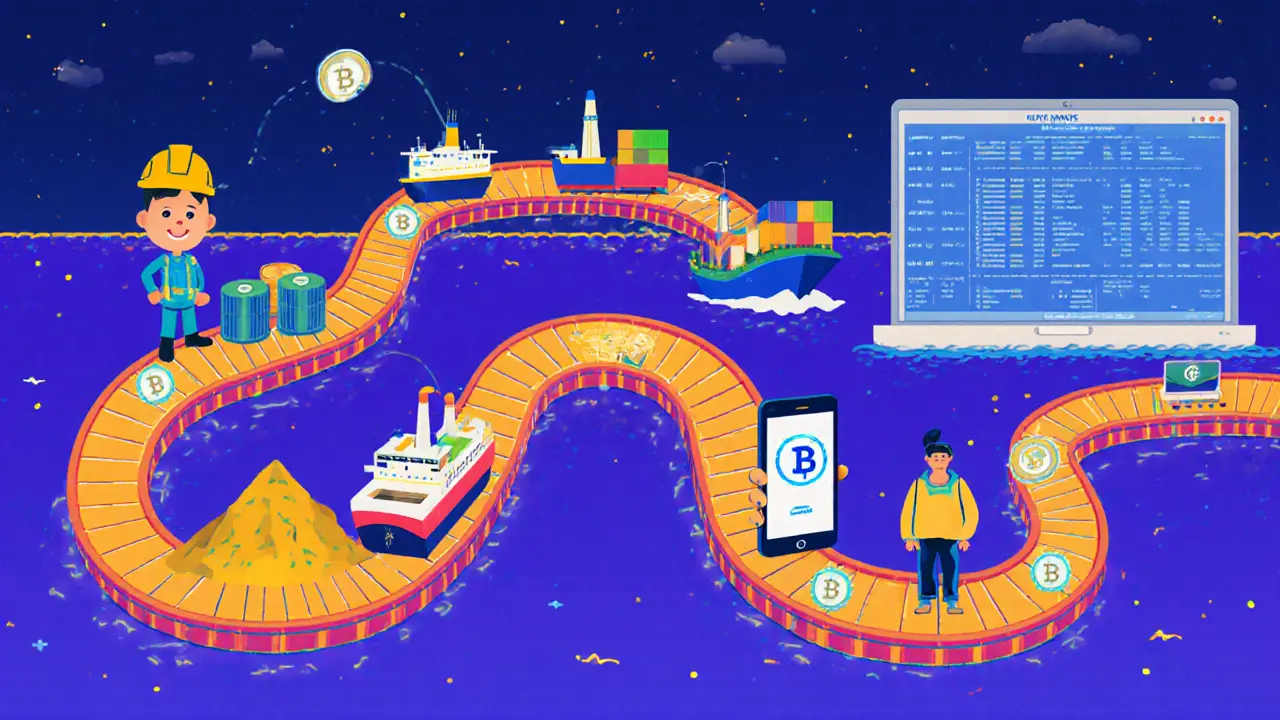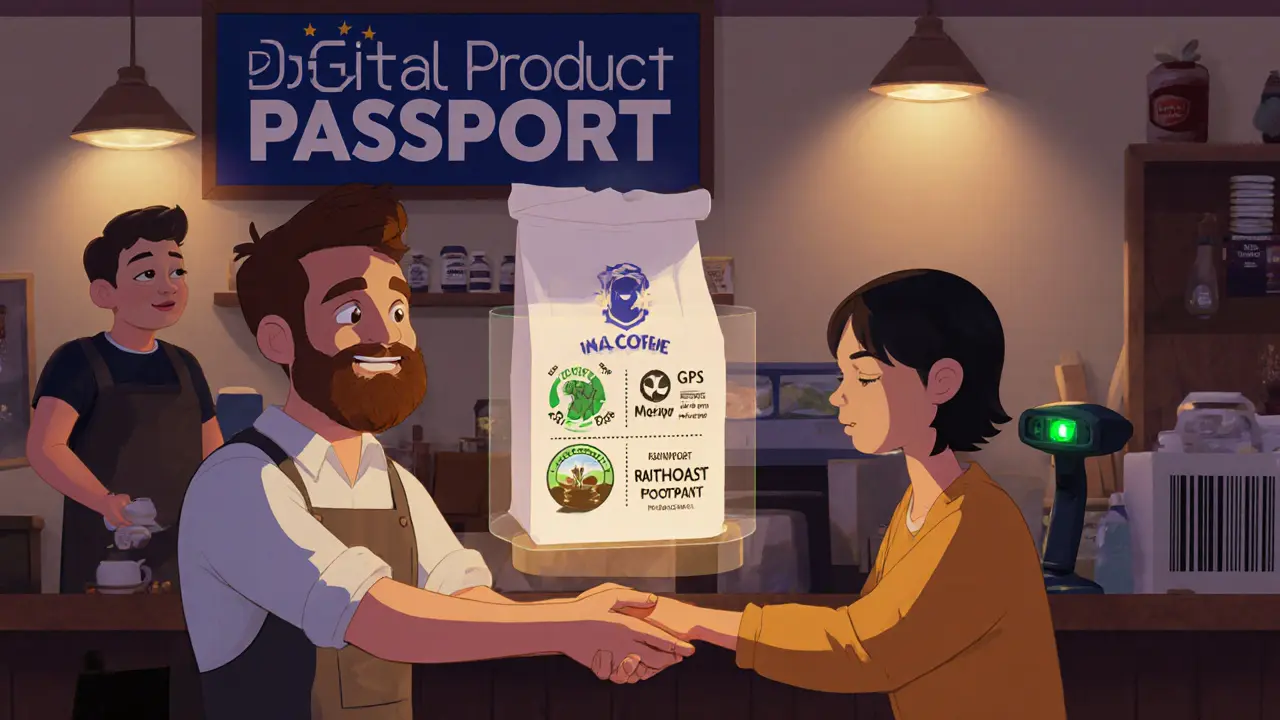
- 12 Nov 2025
- Elara Crowthorne
- 0
Supply Chain Counterfeit Savings Calculator
Calculate how much you could save by reducing counterfeit products in your supply chain using NFTs. Based on industry data showing 87% reduction in counterfeits with NFT implementation.
Your Results
Every time you buy a pair of sneakers, a bottle of medicine, or a laptop, there’s a hidden journey behind it-one filled with factories, shipping containers, warehouses, and dozens of hands. But here’s the problem: you have no idea if it’s real, where it came from, or who touched it along the way. Counterfeit goods cost the global economy over $400 billion a year. And most supply chains are still stuck in paper logs, spreadsheets, and disconnected systems that lie, break, or get lost.
Enter NFTs-not as digital art you buy for memes, but as unbreakable digital IDs for physical products. Non-Fungible Tokens aren’t just for collectors. They’re becoming the backbone of transparent, trustworthy supply chains. And here’s how they’re changing the game.
Stop Counterfeits Before They Hit the Shelf
Counterfeit pharmaceuticals kill people. Fake electronics overheat. Knockoff luxury goods ruin brand trust. Traditional barcode systems are easy to copy. A QR code on a box? Anyone can print that. But an NFT? It’s unique. It’s tied to a single product. And once it’s on the blockchain, it can’t be altered or duplicated.
When a luxury handbag is made, an NFT is created for it. That NFT holds the leather’s origin, the factory ID, the worker who stitched it, the inspection results, and the exact shipping route. When you scan the tag on the bag, you don’t just see a logo-you see a verified history. No guesswork. No fraud. No fake invoices. Brands like LVMH and Adidas are already using this. In 2024, a pilot program in Switzerland cut counterfeit luxury goods in their distribution network by 87%.
Trace Every Step, From Mine to Shelf
How do you know if your smartphone’s cobalt came from a mine that doesn’t use child labor? Or if your coffee beans were grown sustainably? Traditional audits are snapshots. NFTs are full-motion videos.
Each component in a product gets its own digital fingerprint. The copper wire in your charger? Tracked from the mine in Chile. The battery? Logged with its charge cycles and recycling status. The packaging? Shows the carbon footprint of the transport route. All of it stored in a single, unchangeable NFT that moves with the product.
When a recall happens-say, a faulty battery in a laptop-you don’t have to guess which batches are affected. You pull up the NFT records and instantly see every unit sold in the last six months. You don’t waste millions recalling everything. You target the exact 1,200 devices. That’s not efficiency. That’s survival.
Real-Time Transparency for Everyone
Right now, supply chains are black boxes. Manufacturers don’t talk to distributors. Distributors don’t share data with retailers. Retailers don’t tell customers anything. NFTs change that.
With permission-based access, everyone from the farmer to the final buyer can see what they need. A logistics company can track delays. A retailer can verify certification claims before accepting delivery. A consumer can scan a code and see if the fish they bought was caught legally and frozen within two hours of being pulled from the ocean.
This isn’t theory. In New Zealand, a seafood exporter started using NFTs to track tuna from the South Pacific to Tokyo. Within a year, their customer retention jumped 42%. Why? Buyers trusted them more. They could prove their claims. No more vague labels like “sustainably sourced.” Now, they show the exact boat, the GPS coordinates, and the catch date.

Digital Passports Are Coming-And They’re Mandatory
The European Union passed a law in 2024: every electronic device, battery, and textile sold in Europe must have a digital product passport. It’s not optional. It’s law.
These passports include repair instructions, material composition, recycling codes, and environmental impact data. NFTs are the only scalable way to make this work. Imagine your phone’s NFT contains every part number, its energy rating, and a link to the nearest certified repair shop. When it’s time to recycle, the scrap yard scans it and knows exactly how to break it down safely.
Companies that delay adoption will get blocked at borders. Those who use NFTs now will lead the next decade of compliance. This isn’t just about ethics-it’s about staying in business.
Automated Payments and Faster Cash Flow
How long does it take to get paid after shipping a container of goods? Two weeks? Three? With NFTs, payment can happen the moment the product is scanned into the warehouse.
Here’s how: When a shipment arrives, the NFT updates its status to “delivered.” That triggers a smart contract. The buyer’s payment is automatically released. No invoices. No disputes. No waiting for accounting teams to match paperwork. This isn’t sci-fi-it’s already live in pilot programs between German manufacturers and Chinese suppliers.
Smaller businesses benefit the most. Instead of waiting months for cash, they can use their NFT records as collateral to get working capital loans. Banks now accept verified blockchain supply chain data as proof of inventory value. That’s a game-changer for startups and mid-sized suppliers.
Resale Value Goes Up When History Is Clear
Think about buying a used car. You check the service history. You look at accident reports. You want to know it’s been cared for. Now imagine that same level of detail for your laptop, your winter coat, or your power tool.
NFTs turn used goods into premium products. A pair of running shoes with 500 miles on them? If their NFT shows they were cleaned after every run, stored properly, and never exposed to extreme heat, they’ll sell for 30% more than the same shoes without a history.
Platforms like Rebag and The RealReal are already testing this with luxury bags. Buyers pay more because they know it’s real. Sellers earn more because they can prove it. And brands? They get a second revenue stream from resale, turning customers into lifelong advocates.

Prove You’re Doing the Right Thing
Consumers don’t just want cheap products anymore. They want ethical ones. And they’re willing to pay for proof.
NFTs let you show, not just say, that your cotton is fair trade. That your workers get paid a living wage. That your factory runs on renewable energy. Each step is recorded. Each audit is timestamped. Each certification is embedded.
In 2025, 68% of global consumers say they’ll avoid a brand if they can’t verify its social and environmental claims. NFTs turn vague marketing into verifiable facts. That’s not just good PR. It’s a competitive edge.
It’s Not Perfect Yet-But It’s Getting There
Yes, there are hurdles. Not every supplier has the tech to generate NFTs. Integrating with old ERP systems takes time. Training staff to use new tools isn’t free. And some governments still think NFTs are just for crypto bros.
But the momentum is building. Standards are forming. The ISO just released its first blockchain supply chain protocol in early 2025. Major players like IBM, Maersk, and Siemens are investing millions. The cost of entry is dropping fast.
The question isn’t whether NFTs will be part of supply chains. It’s whether your business will be ready when they are.
What’s Next?
Soon, every product you buy will come with a digital twin. That twin will be your proof of authenticity, your record of care, your guarantee of ethics. And it will all be stored on a blockchain, visible to you, the moment you scan a code.
Companies that treat NFTs as just another tech trend will fall behind. Those that see them as the new foundation of trust? They’ll own the next decade of supply chains.
Can NFTs really prevent counterfeiting in supply chains?
Yes. Unlike barcodes or QR codes that can be copied, NFTs are unique digital identities stored on a blockchain. Each NFT is tied to one physical product and contains verified data like origin, certifications, and shipping logs. Anyone can scan the NFT to confirm authenticity in seconds, making it nearly impossible to fake without being detected.
Do I need blockchain experience to use NFTs in my supply chain?
No. You don’t need to understand blockchain to use it. Think of it like email-you don’t need to know how servers work to send a message. Platforms now offer simple dashboards where suppliers scan products with a phone, and NFTs are created automatically. Your team just needs to learn how to use the interface, not the underlying tech.
Are NFTs only useful for luxury goods?
No. While luxury brands were early adopters, NFTs are now being used in pharmaceuticals, electronics, food, automotive parts, and even construction materials. Any product where traceability, safety, or compliance matters benefits. For example, a hospital can verify that a surgical tool hasn’t been reused or tampered with.
How do NFTs help with sustainability reporting?
NFTs store environmental data like carbon emissions, water use, and energy sources at every stage of production. This makes it easy to generate accurate sustainability reports for regulators and customers. The EU’s Digital Product Passport law requires this data-NFTs are the only practical way to collect and share it at scale.
Can NFTs help small businesses compete with big brands?
Absolutely. Small suppliers often struggle to prove quality or ethics. NFTs let them build trust without big marketing budgets. A local coffee roaster can show exactly where their beans came from, how they were roasted, and who packed them. That transparency attracts loyal customers who care about authenticity-not just price.
What happens if the NFT gets lost or corrupted?
NFTs themselves can’t be lost or corrupted because they’re stored on a decentralized blockchain. The physical product might lose its tag, but the NFT record still exists. Most systems link the NFT to a unique serial number on the product, so even if the QR code is damaged, the product can still be identified by its ID in the system.
Is it expensive to implement NFTs in a supply chain?
Initial setup costs vary, but many platforms now offer subscription models under $500/month for small to mid-sized operations. The real cost is in training and integration, not the NFT tech itself. The savings from reduced counterfeiting, faster payments, and fewer recalls often pay back the investment in under 12 months.
